このページを
日本語
で読む
Twilight spreads across the sky, casting a soft glow over the houses lining the eaves. In this quiet fishing village, there’s a touch of exotic charm. No Fishing Port, in the Kodomari area of Itoigawa City at the western edge of Niigata Prefecture, is sometimes called “the Amalfi of the East” because the clustered houses on the hillside resemble Italy’s Amalfi Coast.
Watch scenes from the village.
Life by the Sea
The port is known for its abundant red snow crab catches and has long been one of the prefecture’s most prominent fishing villages.
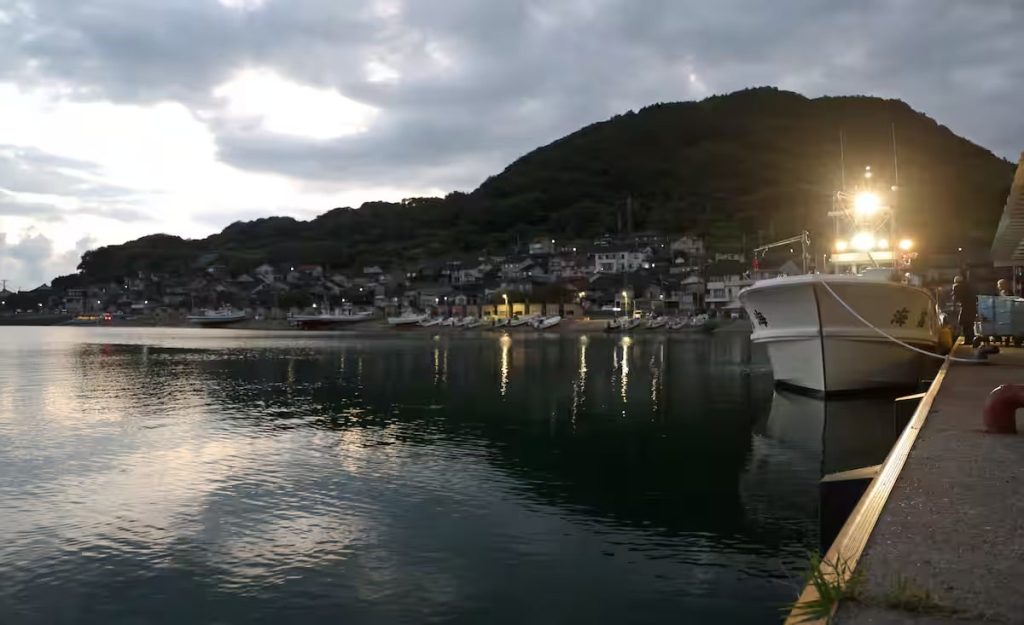 Fishermen unload their catch at the port in the early morning.
Fishermen unload their catch at the port in the early morning.
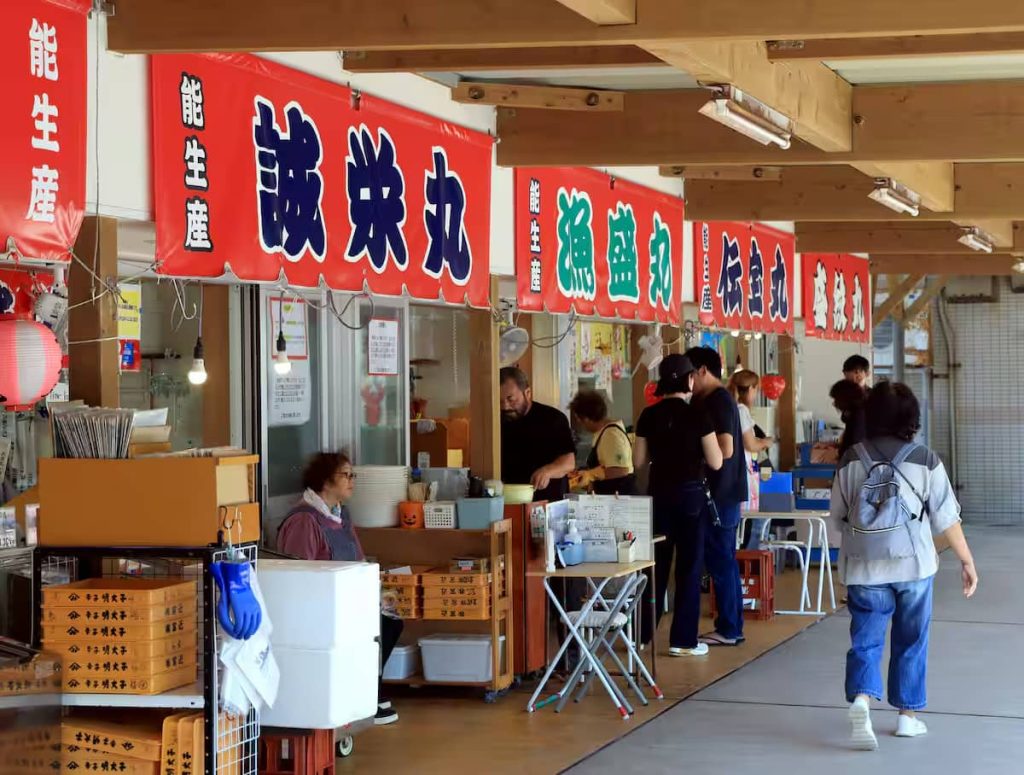 At the roadside station “Michi-no-Eki Marine Dream No” near the port, visitors can enjoy red snow crabs and a variety of other seafood.
At the roadside station “Michi-no-Eki Marine Dream No” near the port, visitors can enjoy red snow crabs and a variety of other seafood.
A rare daytime fish auction takes place here, allowing visitors to see fish caught in No and nearby areas such as Tsutsuishi. The auction can even be observed from inside the facility.
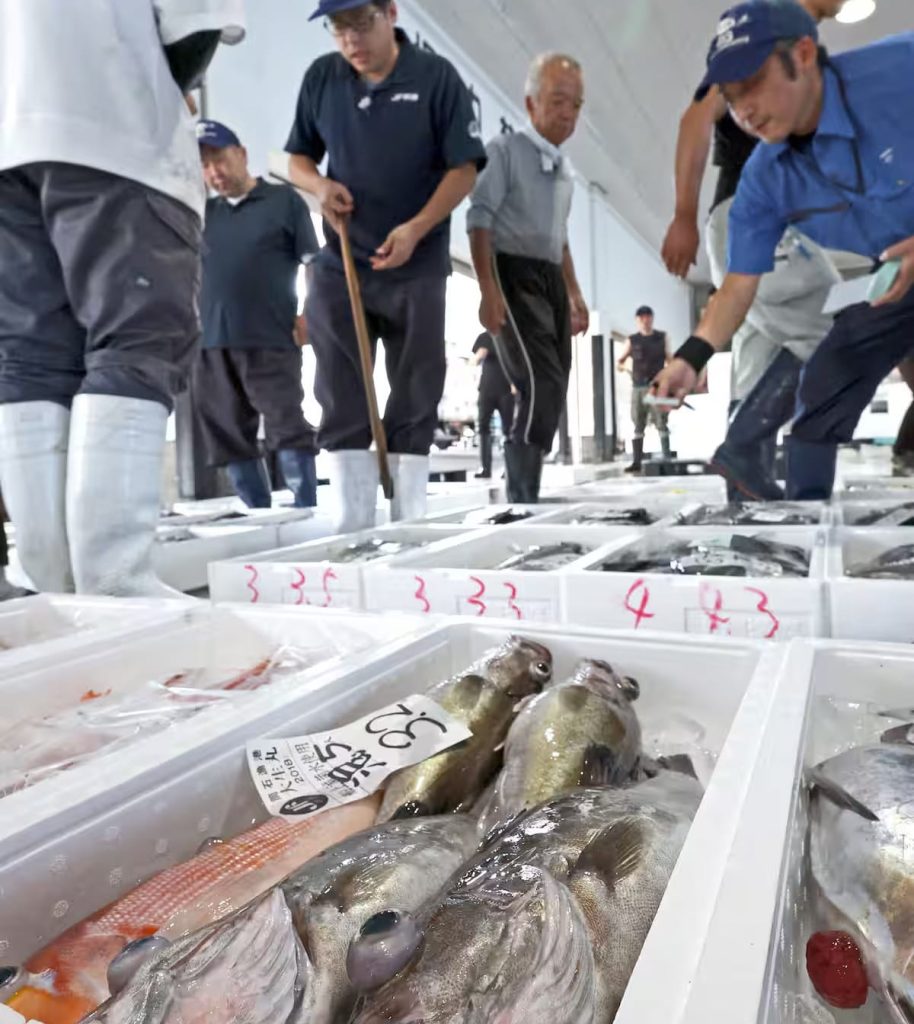 Daytime fish auction held at No Fishing Port.
Daytime fish auction held at No Fishing Port.
The houses along the waterfront appear to reach out over the sea. Built in multiple tiers on the mountainside, this layout is known as “five-tiered construction.” The narrow, maze-like streets are a popular attraction for tourists.
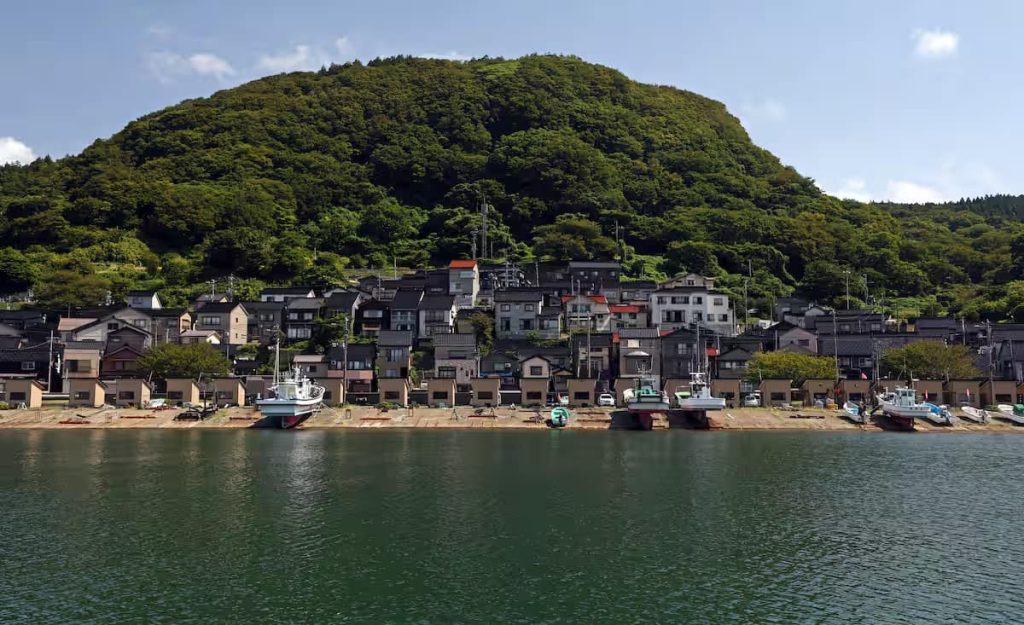 Houses nestled between the mountains and the sea.
Houses nestled between the mountains and the sea.
In 1963, the steep terrain caused a large landslide. Houses were destroyed, and trains on the former Hokuriku Line (now the Echigo Tokimeki Railway) were pushed toward the coastline. The soil and debris from the landslide were later used to form the current fishing port.
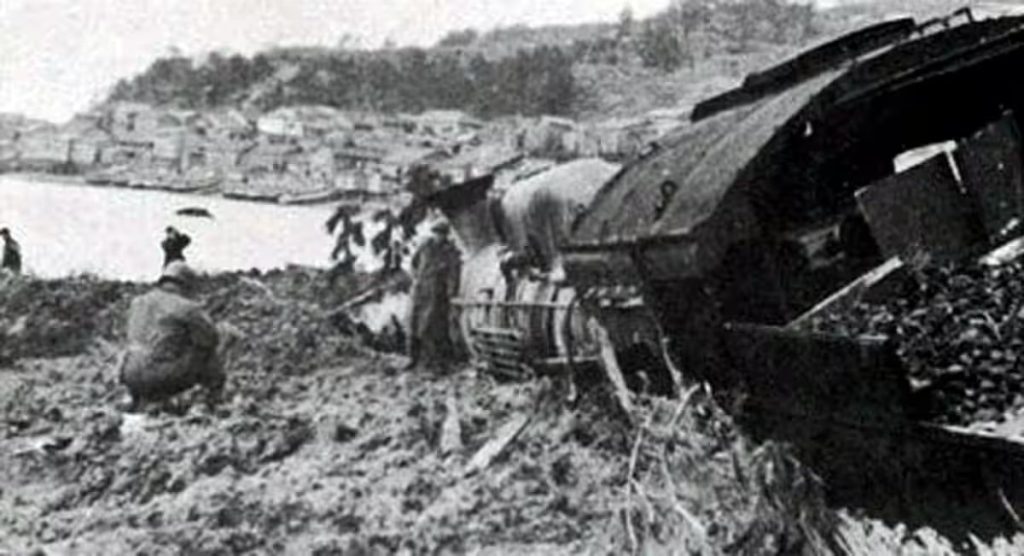 A steam locomotive pushed into the bay by the landslide of 1963. (Courtesy of Niigata Prefecture Civil Engineering Department, Erosion Control Division)
A steam locomotive pushed into the bay by the landslide of 1963. (Courtesy of Niigata Prefecture Civil Engineering Department, Erosion Control Division)
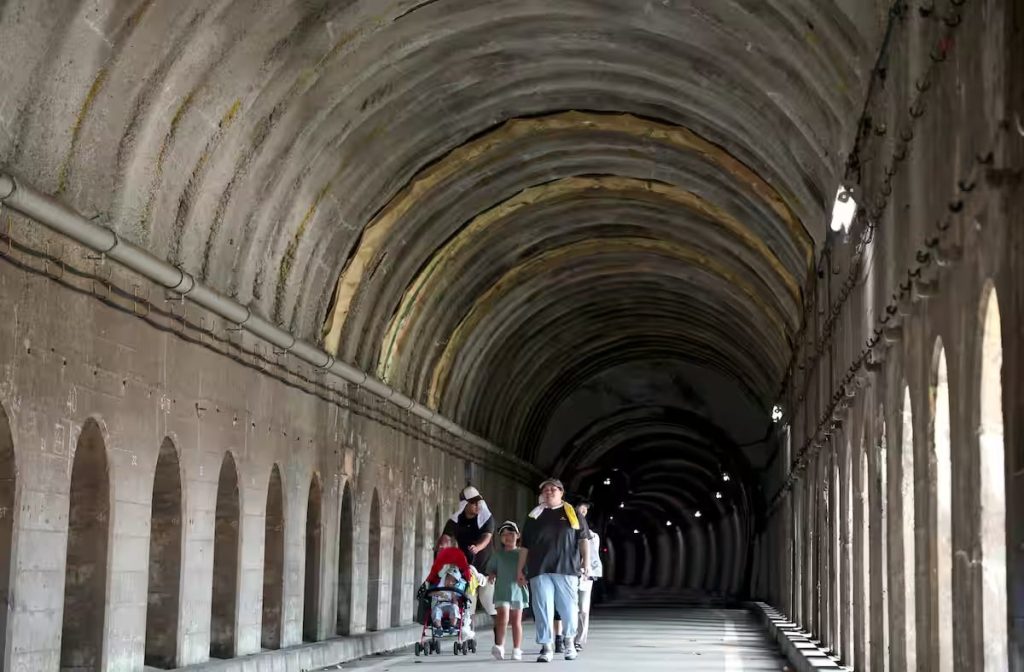 Kubiki cycling and pedestrian path, repurposed from the former Hokuriku Line.
Kubiki cycling and pedestrian path, repurposed from the former Hokuriku Line.
Community Efforts
Kunio Takano, a native of No Town (now Itoigawa City) who passed away in September, spent decades photographing the local scenery. He said, “No is a place where mountains, sea, and people coexist. The town has changed gradually over the years, but that coexistence has always remained.”
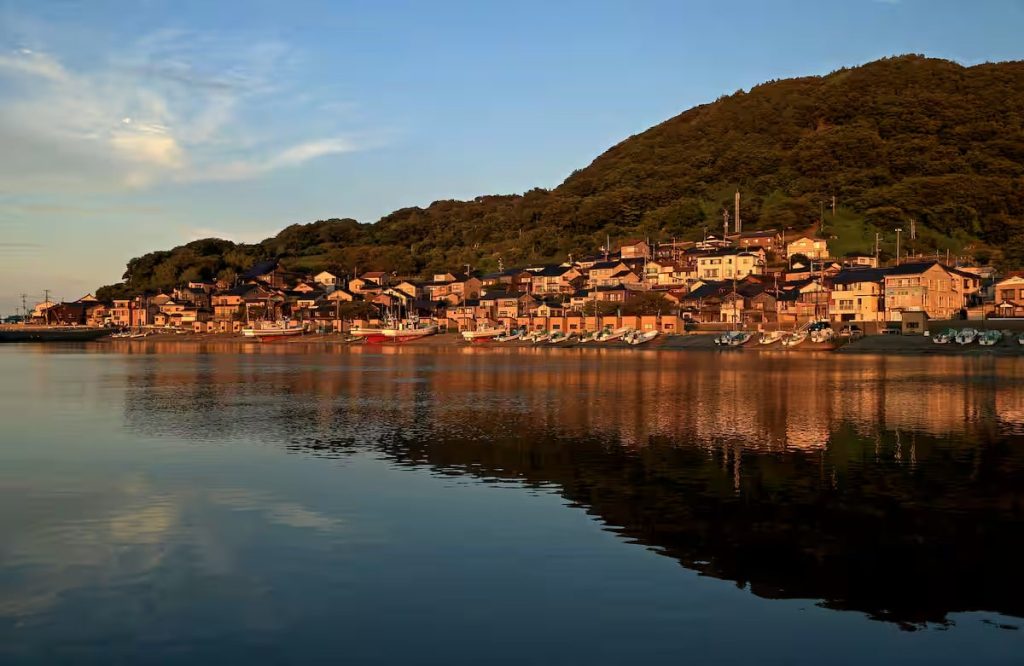 The port and houses glowing red in the sunset.
The port and houses glowing red in the sunset.
Today, about 400 people live in Kodomari, but the population is aging, and vacant houses are on the rise.
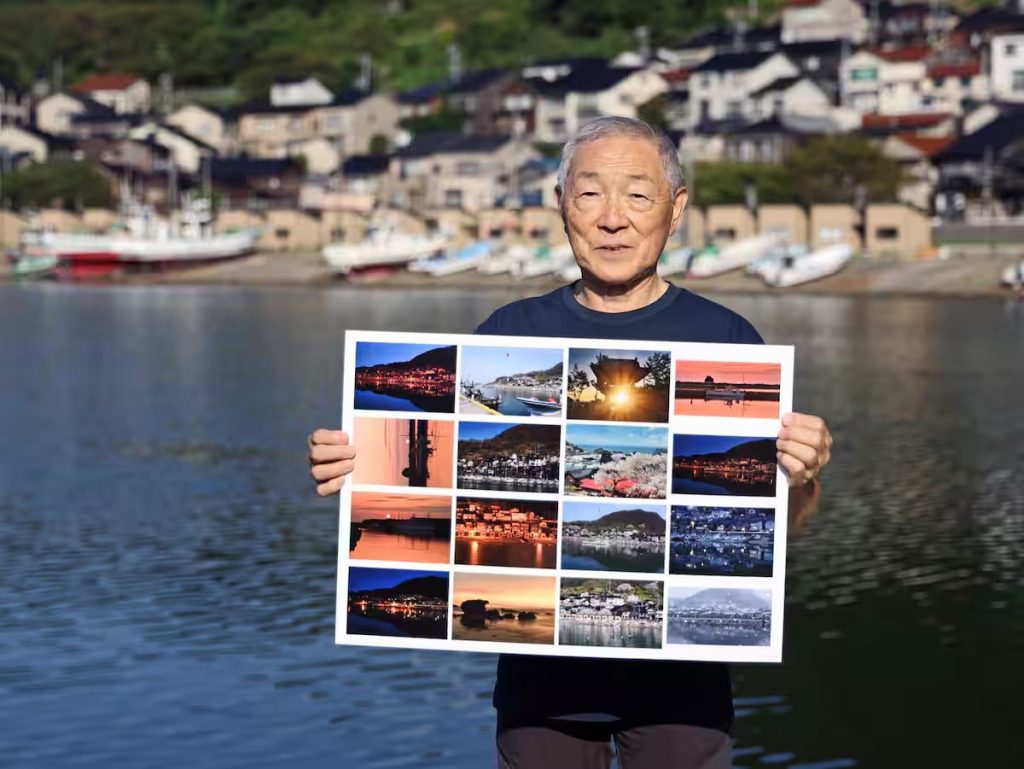 Kunio Takano, who photographed the changing seasons in No throughout the year.
Kunio Takano, who photographed the changing seasons in No throughout the year.
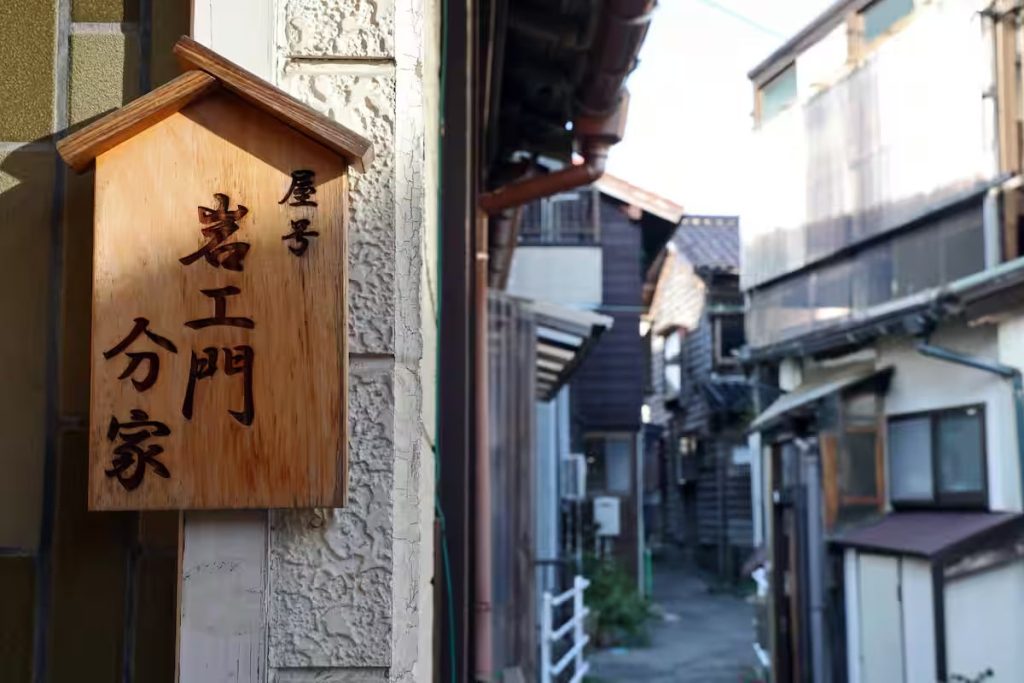 In the Kodomari area, some households use trade or house names because many families share the same surname.
In the Kodomari area, some households use trade or house names because many families share the same surname.
“There are many challenges, including population decline, but we want to work with the community to revitalize the town,” says Masahiro Kaneko, head of the Kodomari Community Center. His father made a living from fishing. Kaneko has organized tours with local travel agencies to highlight the town’s charm and attract visitors.
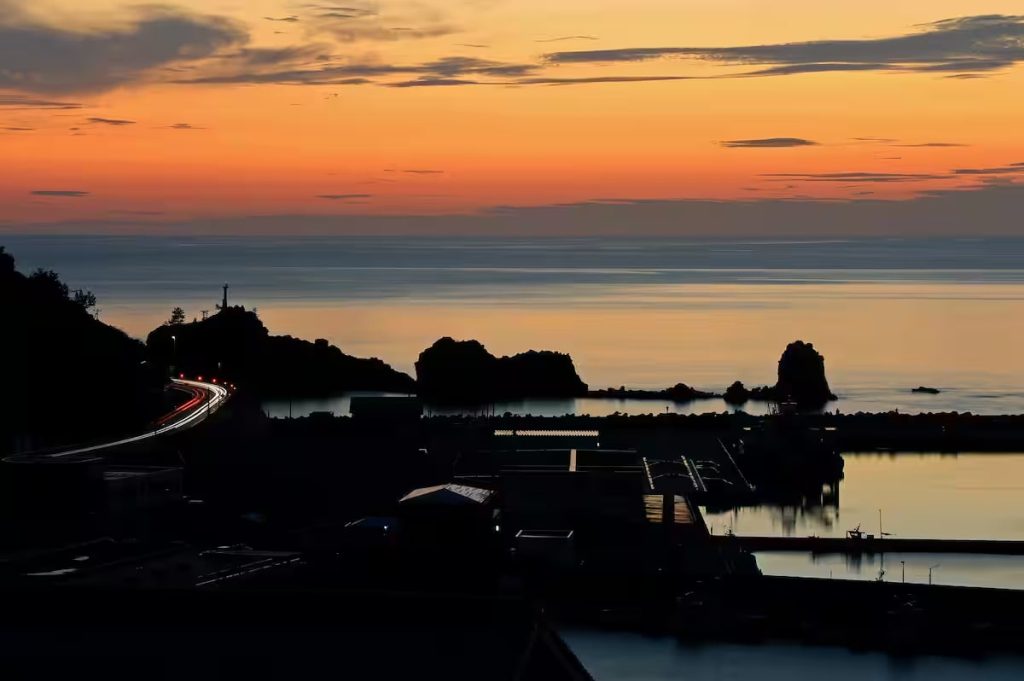 No Fishing Port and National Route 8 at dusk.
No Fishing Port and National Route 8 at dusk.
 RELATED:
RELATED:
Author: Takumi Kamoshida, The Sankei Shimbun
このページを
日本語
で読む
Continue Reading


AloJapan.com